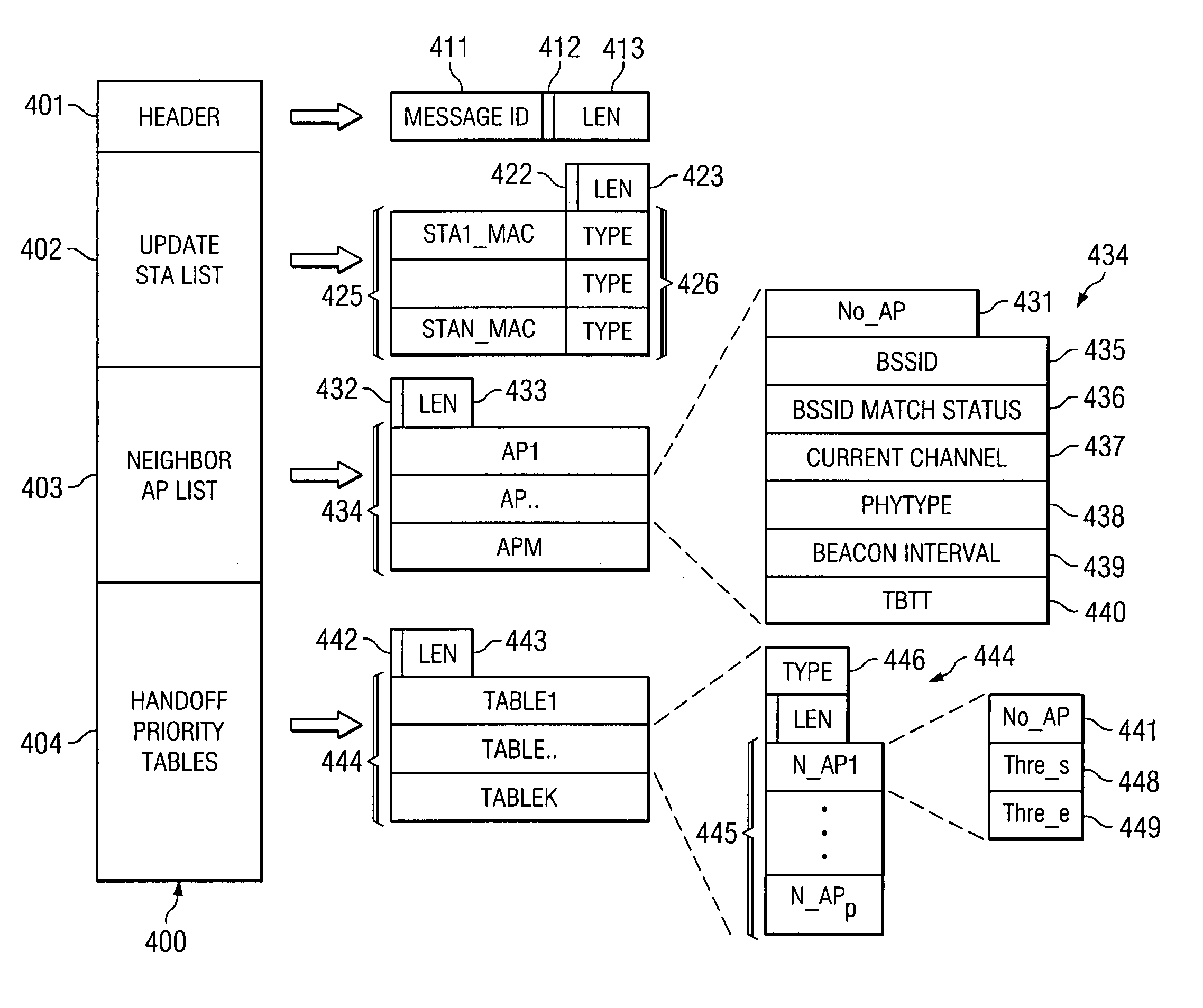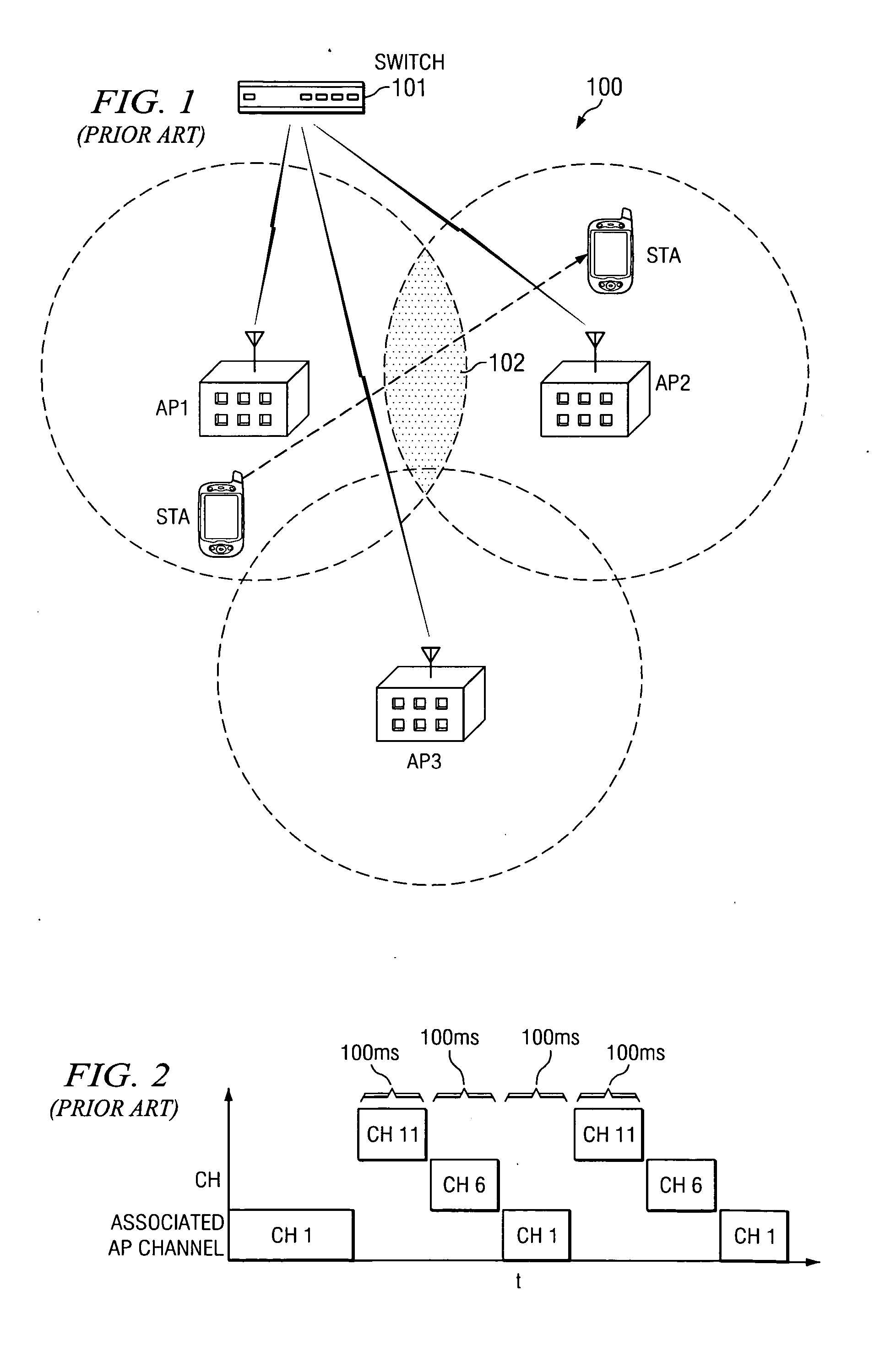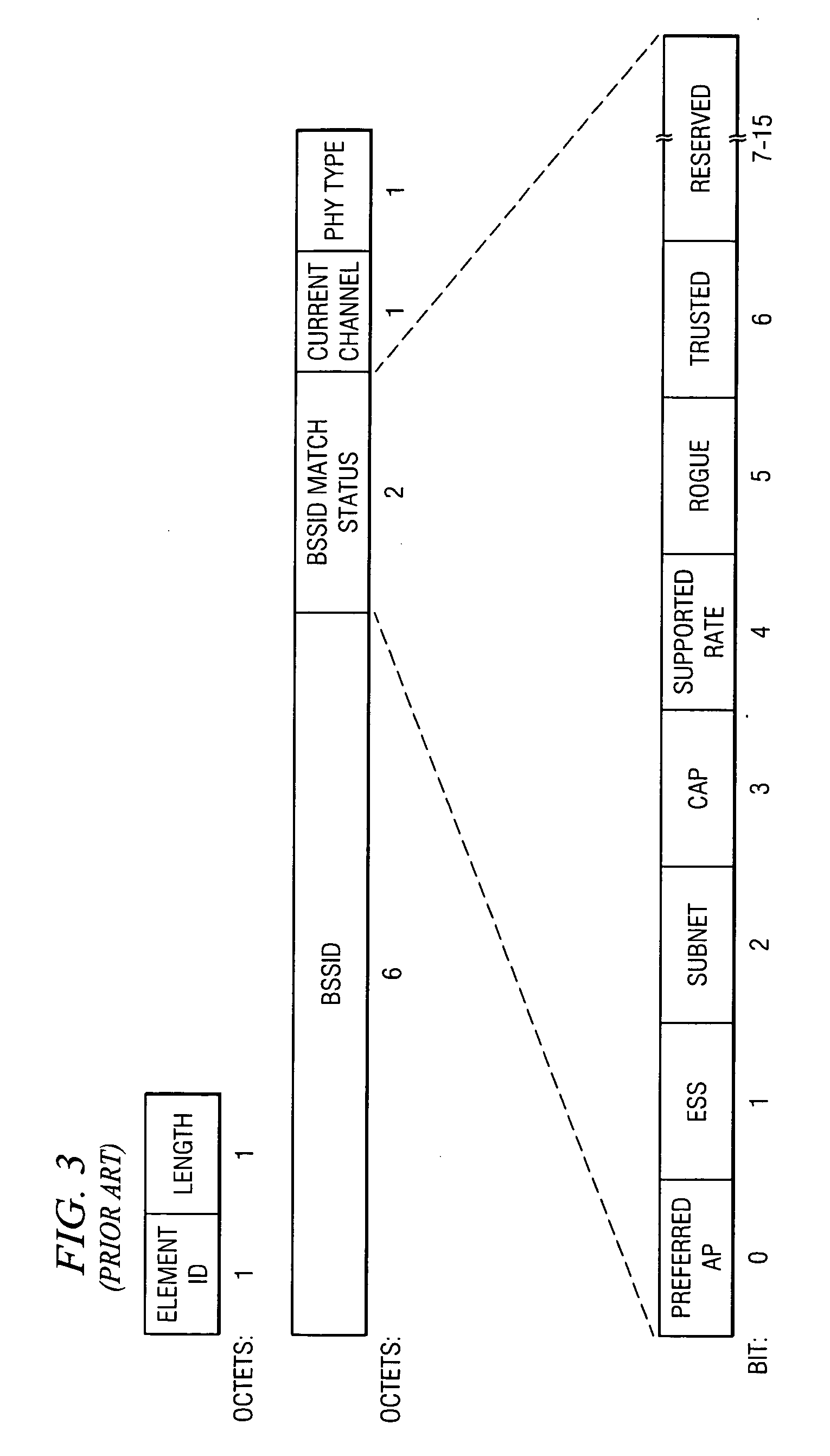Systems and methods for efficient hand-off in wireless networks
a wireless network and wireless network technology, applied in the field of wireless communication, can solve problems such as late hand-off, and achieve the effects of reducing network overhead, reducing or eliminating, and freeing network capacity
- Summary
- Abstract
- Description
- Claims
- Application Information
AI Technical Summary
Benefits of technology
Problems solved by technology
Method used
Image
Examples
embodiment 400
[0041] Turning to the neighbor reports of the present invention, embodiments of the present invention employ a neighbor report that is sent from an access point to its associated stations, either as a broadcast, or upon request by a station. FIG. 4 is a diagrammatic illustration of the contents of an embodiment of an efficient neighbor report such as may be used in accordance with embodiments of the present invention. Embodiment 400 of a neighbor report includes header 401, update station list 402, neighbor access point list 403, and handoff priority tables 404. Neighbor report 400 is preferably transmitted as a broadcast packet so that all station associated with the broadcasting access point can receive it.
[0042] Header 401 of neighbor report 400 may have a length of three octets. First octet 411 may be a message ID which informs a receiving station of the type of message, i.e. a neighbor report. Two most significant bits (MSB) 412 of the following two octets may be used as status...
embodiment 500
[0046] In accordance with embodiments of the present invention adaptive threshold for searching should be set with the consideration of various factors, such as application type, overlapping area among different access points, moving speed of the station and / or the like. In accordance with embodiments of the present invention, the search thresholds may be measures of signal strength, error rates and / or other measures of link quality. FIG. 5 is a diagrammatic illustration of embodiment 500 of the use of adaptive thresholds for searching, such as threshold 448, according to embodiments of the present invention. This threshold may be adapted according to the application a station is running, the speed the station is moving, etcetera, at a given time. FIG. 5 shows various thresholds for searching according to application type, with stations 505 and 507 moving from AP1 coverage area 501 to AP2 coverage area 502. Station 505, running a voice application, may employ a threshold of −55 dBm ...
embodiment 800
[0052] Returning to the neighbor report, FIG. 8 is a flow diagram of embodiment 800 of a method for obtaining a neighbor report by a station. When a station makes a new connection with an access point, i.e. associate or re-associate with an access point, at 801, the station resets a timer at 802 and begins to count the time. At 803 the station waits for a neighbor report. If the station fails to receive a neighbor report within two seconds (804), the station requests a neighbor report from its associated access point at 805. Then the station resets its timer and switches back to waiting for a neighbor report at 803. If the station successfully receives neighbor report in two seconds (806), the station switches to another state and waits for any new neighbor report or update at 807. However if the station fails to receive a neighbor report or update for a long period of time, e.g. 20 seconds, (808) the station will request a neighbor report at 805. In this manner a station maintains ...
PUM
 Login to View More
Login to View More Abstract
Description
Claims
Application Information
 Login to View More
Login to View More - R&D
- Intellectual Property
- Life Sciences
- Materials
- Tech Scout
- Unparalleled Data Quality
- Higher Quality Content
- 60% Fewer Hallucinations
Browse by: Latest US Patents, China's latest patents, Technical Efficacy Thesaurus, Application Domain, Technology Topic, Popular Technical Reports.
© 2025 PatSnap. All rights reserved.Legal|Privacy policy|Modern Slavery Act Transparency Statement|Sitemap|About US| Contact US: help@patsnap.com



